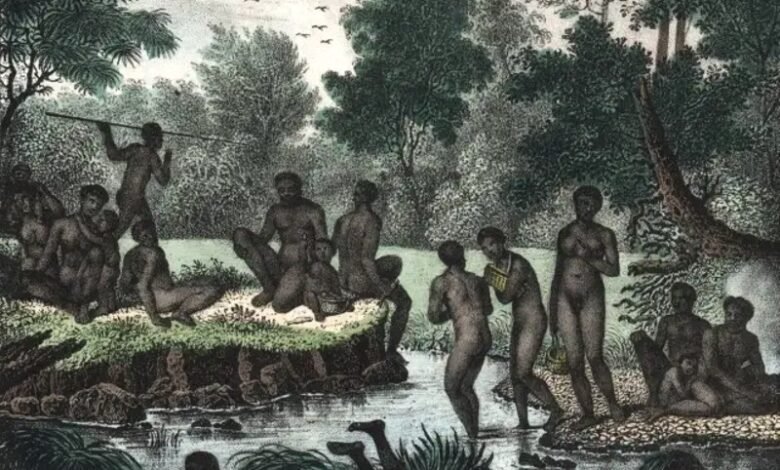The World’s Oldest Stories—and Where to Travel to Find Them
In this article, we'll delve into some of the world's oldest stories and highlight the incredible destinations where you can experience them firsthand.

Storytelling is one of the oldest and most powerful forms of human communication. Long before written language, ancient civilizations used oral tradition to pass down their knowledge, beliefs, and values. Some of these ancient stories have survived the ravages of time, etched into stone, whispered around fire pits, or rediscovered in archaeological ruins. For the modern traveler, these tales offer a fascinating way to explore human history and culture. In this article, we’ll delve into some of the world’s oldest stories and highlight the incredible destinations where you can experience them firsthand.
EXPLORE THE CONTENTS
The Epic of Gilgamesh—Mesopotamia (Modern-Day Iraq)
Often regarded as the earliest surviving piece of literature, The Epic of Gilgamesh dates back to around 2100 BCE. This Sumerian poem tells the story of Gilgamesh, a king who embarks on a journey to find immortality after the death of his friend Enkidu. The themes of friendship, mortality, and the quest for meaning remain profoundly relevant today.
To walk in the footsteps of Gilgamesh, consider visiting Iraq, particularly the ancient city of Uruk, where the story is believed to have originated. Though modern travel to Iraq requires caution, there are guided heritage tours available that focus on its Mesopotamian history. Museums in Baghdad and the British Museum in London also house clay tablets inscribed with the epic.
The Pyramid Texts—Egypt
Written around 2400 BCE, the Pyramid Texts are among the oldest known religious writings. Found in the pyramids of Saqqara, these hieroglyphic inscriptions were intended to guide the pharaohs in the afterlife. The texts offer insight into early Egyptian mythology, cosmology, and spiritual beliefs.
Travelers interested in ancient Egyptian lore should head to Saqqara, south of Cairo. Here, the Pyramid of Unas features some of the best-preserved Pyramid Texts. A guided tour of this necropolis, combined with a visit to the Egyptian Museum in Cairo, provides a deeper understanding of the cultural context behind these writings.
The Rigveda—India
The Rigveda is a collection of ancient hymns composed in Sanskrit around 1500 BCE. As the oldest of the four Vedas, it forms the spiritual foundation of Hinduism and reflects the beliefs of the early Indo-Aryan civilization.
To explore the heritage of the Rigveda, travelers can visit the northern Indian plains, particularly the states of Uttar Pradesh and Punjab, regions thought to be closely linked to the Vedic civilization. Participating in Vedic chanting ceremonies or visiting ancient temples can offer a profound spiritual and cultural experience.
The Dreamtime Stories—Australia
Among the oldest continuous cultures on Earth, Aboriginal Australians have been telling Dreamtime stories for over 65,000 years. These myths describe the creation of the world, the ancestors, and the laws governing human behavior. Passed down through oral tradition, music, and art, Dreamtime stories remain central to Aboriginal identity.
To experience Dreamtime storytelling, travelers can visit places like Uluru (Ayers Rock) in the Northern Territory. Sacred to the Anangu people, Uluru is a living canvas of creation stories depicted in rock art and shared during guided cultural tours. Museums and cultural centers in Alice Springs also provide deeper insights.
Homer’s Iliad and Odyssey—Greece
Composed around the 8th century BCE, Homer’s epics are among the most influential literary works in Western culture. The Iliad recounts the Trojan War, while the Odyssey follows Odysseus’ long journey home. These tales shaped ancient Greek values and have inspired countless adaptations over the centuries.
To retrace the paths of these epic heroes, Greece offers a wealth of historical sites. Visit Troy (in modern-day Turkey) for the Iliad and Ithaca, believed to be Odysseus’ home, for the Odyssey. The Acropolis Museum in Athens and the Archaeological Museum of Heraklion also feature relics linked to Homeric legends.
The Popol Vuh—Guatemala
The Popol Vuh is the creation myth of the K’iche’ Maya, detailing the adventures of the Hero Twins and the gods’ attempts to create humans. Compiled in the 16th century but based on older oral traditions, it offers a glimpse into pre-Columbian cosmology and moral philosophy.
Travelers can explore Mayan ruins such as Tikal, Quiriguá, and Copán to connect with the world of the Popol Vuh. In Chichicastenango, home to the modern K’iche’ people, visitors can witness traditional rituals and ceremonies rooted in these ancient beliefs.
The Enuma Elish—Babylon (Modern-Day Iraq)
Dating to around 1100 BCE, the Enuma Elish is the Babylonian creation myth, describing the battle between gods that led to the formation of the world. Central to this story is Marduk, the chief deity who defeats Tiamat and creates the heavens and the earth from her body.
For enthusiasts of ancient mythology, visiting Babylon’s ruins near Hillah in Iraq is a remarkable experience. Though not fully excavated, the site offers a glimpse into the grandeur of the Babylonian empire. Artifacts and inscriptions related to the Enuma Elish can also be found in global institutions like the Louvre and the Pergamon Museum.
The Norse Sagas—Scandinavia
The Norse sagas, passed down orally before being written in the 13th century, are rich with gods, giants, and heroes. Stories like the Poetic Edda and Prose Edda describe the creation of the world, Ragnarok (the apocalypse), and the adventures of Odin, Thor, and Loki.
To immerse yourself in Norse mythology, head to Iceland, where many of the sagas were written. Visit the Settlement Exhibition in Reykjavik or take a tour of Thingvellir National Park, where ancient assemblies were held. In Norway, the Viking Ship Museum in Oslo provides further insight into the world of the Norse gods.
The Torah and Biblical Narratives—Israel and the Middle East
The Torah, forming the first five books of the Hebrew Bible, includes some of the oldest religious narratives in the Judeo-Christian tradition. Stories of Adam and Eve, Noah, Abraham, and Moses have shaped the moral and cultural framework of billions.
Travelers can journey through Israel, visiting ancient sites like Jerusalem, Hebron, and Mount Sinai. These places not only hold religious significance but are deeply tied to the storytelling traditions that have endured for millennia.
Conclusion: A Journey Through Time
Exploring the world’s oldest stories offers more than just a literary or historical experience—it invites us into the heart of ancient civilizations. These narratives shaped the moral codes, worldviews, and artistic expressions of their cultures. Today, travelers can enrich their journeys by engaging with these stories at their places of origin, gaining a deeper appreciation for the timeless art of storytelling.
Whether you’re walking the ruins of Uruk, chanting hymns in India, or standing before the monumental Uluru, each destination reveals a layer of human experience embedded in the world’s oldest stories. Embrace the journey, for these tales are the footprints of humanity’s shared past.







